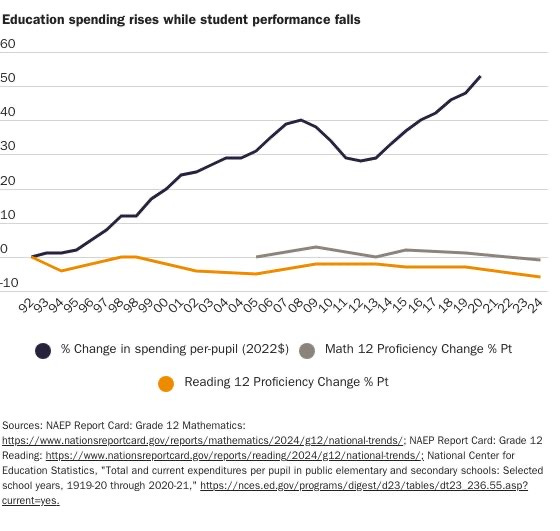Surprising Stats
Did you know? . . .
I
“In the United States, the government controls 84 percent of health spending. That’s a larger share than in 27 out of 38 OECD-member nations, including the United Kingdom (83 percent) and Canada (73 percent), each of which has an explicitly socialized health care system. When it comes to government control of health spending, the United States is closer to communist Cuba (89 percent) than the average OECD nation (75 percent).”
And
“The health care industry spends six times what the defense industry does on lobbying Congress.”
Source: Michael Cannon at Cato
II
Referring to the Economic Freedom of the World Report: “As the authors point out, between 1933 and 2016 (before the first Trump administration), the effective tariff rate in the United States fell from about 20 percent to less than 2 percent. Trumpian protectionism, however, means that the effective US tariff rate now stands at 20.2 percent, well above the global trade-weighted average of 2.5 percent. Such is the magnitude of the increase in US tariffs that the United States now ranks a lowly 161 out of 165 countries examined in the report in the tariff subcomponent score, just behind Iran. The United States now keeps company with poorer, authoritarian regimes rather than wealthier, market-oriented democracies, a bloc it once led.”
Source: Economic Freedom of the World 2025
III
“The [chart below] depicts changes in the share of twelfth-grade students hitting “proficient” from the baseline years of 1992 for reading and 2005 for math. It also shows the percentage change in inflation-adjusted spending per pupil from the 1992 baseline. The results are not good: real spending rose more than 50 percent, while the share of students proficient in reading dropped 6 percentage points—from 40 percent in 1992 to only 34 percent in 2024—and in math fell 1 percentage point, from 23 percent in 2005 to 22 percent in 2024.”
Source: Neal McCluskey at Cato
IV
“In the first three months of 2025, U.S. companies canceled, downsized or mothballed nearly $8 billion worth of supply chain projects — including more than $2.2 billion tied to battery plants. That single quarter exceeded the combined losses of the previous two years, according to Atlas Public Policy.”
Source: Modeled Behavior on X


